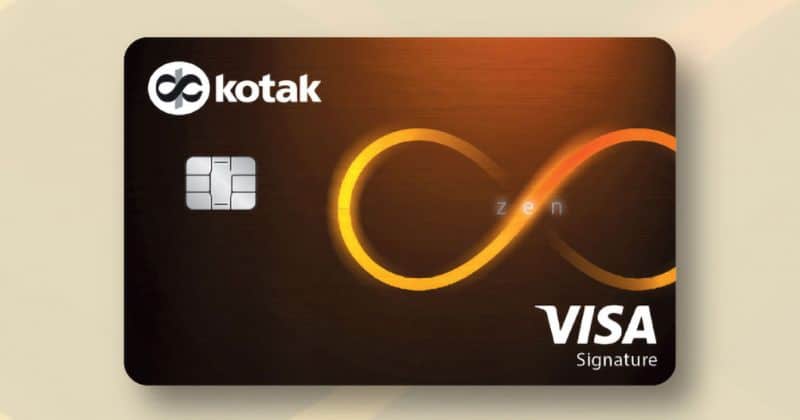How To Cancel Kotak Mahindra Bank Credit Card?

Credit cards are convenient tools for managing personal finances and earning rewards, but there may come a time when you need to cancel one. Whether it’s due to high fees, a change in financial circumstances, or simply no longer needing the card, understanding the right steps to follow is crucial. If you’ve decided to cancel your credit card, it’s important to proceed carefully to avoid unnecessary complications, such as penalties or a negative impact on your credit score. Here’s a comprehensive guide to help you navigate the process of canceling your credit card. Before you initiate the cancellation process, it’s essential to clear all outstanding dues on your kotak credit card. This includes the current balance, any pending interest, and fees. If you have an outstanding balance, you should pay it off in full. You can typically make this payment through your bank account or online channels. If you don’t settle the balance before requesting cancellation, you may face additional charges, and your card issuer could refuse to process your request. It's also important to ensure that any automatic payments linked to the card are cleared or transferred to a different card. Many credit cards come with reward programs that allow you to accumulate points for purchases. Before canceling, it’s advisable to check your points balance and redeem them. Once the card is canceled, you may lose any unused points, and in some cases, you may not be able to transfer them to another card. To make the most out of your rewards, redeem them for gifts, cash back, or other available options before proceeding with the cancellation. Canceling a credit card can affect your credit score, especially if it is one of your oldest credit lines or has a high credit limit. When you close a credit card, it can increase your credit utilization ratio, which is the amount of credit you're using relative to your total available credit. A higher utilization rate can negatively impact your credit score. Additionally, canceling a card may reduce the average age of your credit history, which is another factor that influences your credit score. To mitigate any potential negative effects, consider canceling newer cards or those with higher fees. If possible, try to pay down other outstanding balances and avoid accumulating high levels of debt on your remaining credit cards. Once you’ve settled your dues and redeemed your rewards, you can initiate the cancellation process by contacting customer support. Most credit card issuers offer several ways to reach them, including through their customer service hotline, email, or even via their mobile app. When speaking to a representative, be sure to mention that you wish to cancel your credit card account. They may attempt to persuade you to keep the card by offering rewards or reducing fees, but if you’re set on canceling, politely insist on completing the cancellation. Make sure to get confirmation of the cancellation request in writing. This confirmation will serve as proof that the cancellation process was initiated and completed, which can help you avoid any future disputes. It’s also wise to ask the representative about any final steps or documentation needed to finalize the cancellation. In some cases, credit card issuers may require a written request to cancel your account, especially if the account is linked to certain benefits, or if you’re canceling due to specific reasons like fraud or unauthorized transactions. If this is the case, draft a formal letter that includes your account details, the reason for cancellation, and your contact information. Send the letter through certified mail to ensure it is received. After you’ve submitted your cancellation request, it’s important to follow up to ensure that the account has been closed. You should receive a letter or email confirming that the account has been closed and that there are no outstanding balances. Keep a copy of this communication in case of any future disputes. Additionally, it may take a few weeks for your cancellation to reflect on your credit report, so it’s advisable to regularly check your credit score and report for any discrepancies. Once your credit card has been canceled, the final step is to destroy the card itself. This involves cutting up the card into small pieces, especially through the magnetic stripe and the chip, to ensure that it cannot be used fraudulently. Simply discarding the card or keeping it around can lead to security risks if it falls into the wrong hands. Even after you’ve canceled your card, it’s important to monitor your credit report regularly to ensure that the account has been properly closed. If any transactions show up on the card after cancellation, or if the issuer reports the account as still open, you’ll need to take action to resolve the issue. Report any discrepancies to the credit card issuer and credit bureaus immediately. If you’re looking to cancel your credit card due to fees or other issues, it’s worth considering alternatives before you proceed. Some credit card issuers allow you to downgrade to a no-fee or lower-fee card. This way, you can retain your credit history with the issuer and keep your credit utilization ratio low, all while avoiding the fees associated with your current card. This option can help preserve your credit score, especially if the card you want to cancel is one of your oldest credit lines. Canceling a credit card is not a decision to be taken lightly, as it can have an impact on your financial health, especially if the card has been a part of your credit history for a long time. By following the right steps, you can ensure that the process goes smoothly and that you minimize any negative effects. Always clear any dues, redeem rewards, and understand the potential impact on your credit score before proceeding. Taking the time to consider your options and make an informed decision will help you maintain financial stability in the long run.Understanding the Process of Canceling a Credit Card
Check for Outstanding Dues
Redeem Rewards or Points
Understand the Impact on Your Credit Score
Contact Customer Support
Send a Written Request (If Necessary)
Follow Up for Confirmation
Destroy the Credit Card
Keep an Eye on Your Credit Report
Why You Should Consider Alternatives
Final Thoughts

